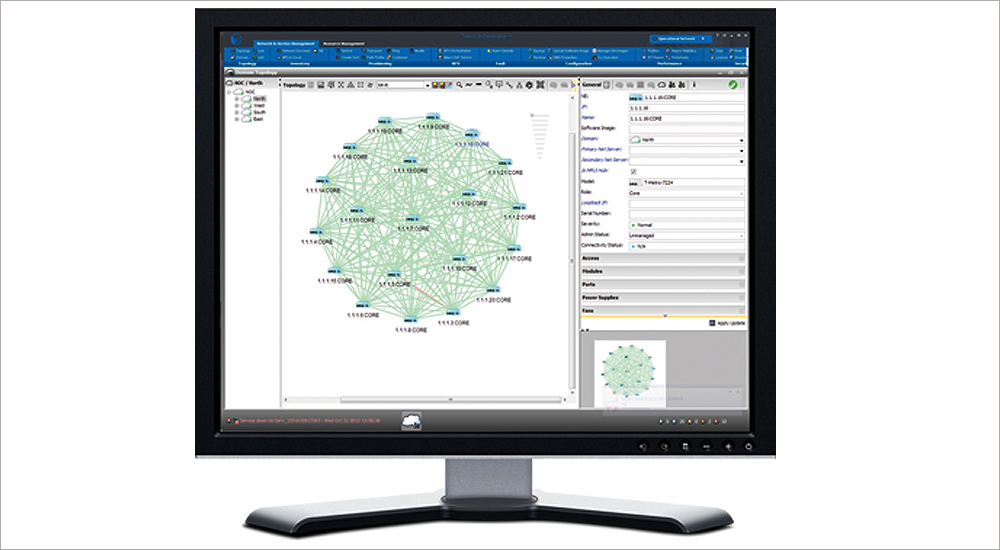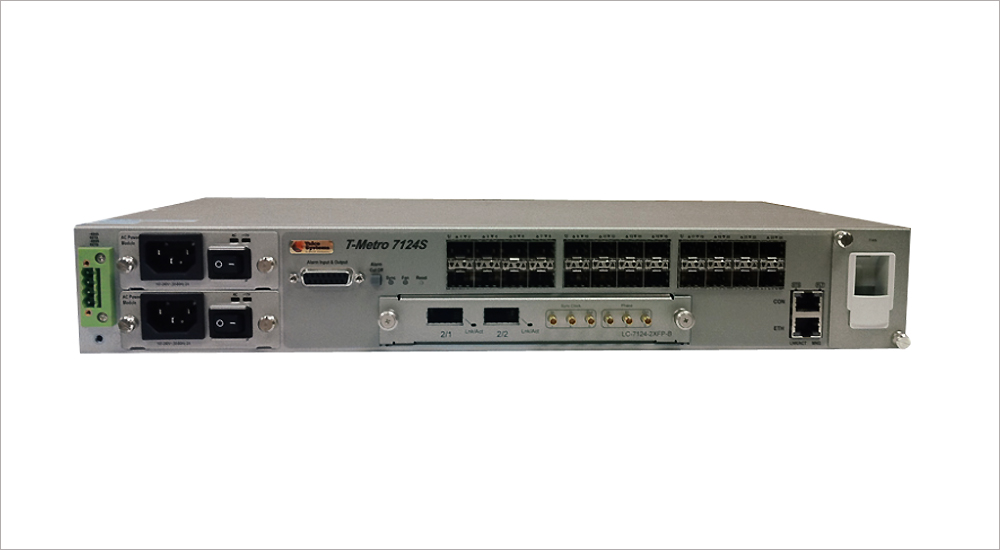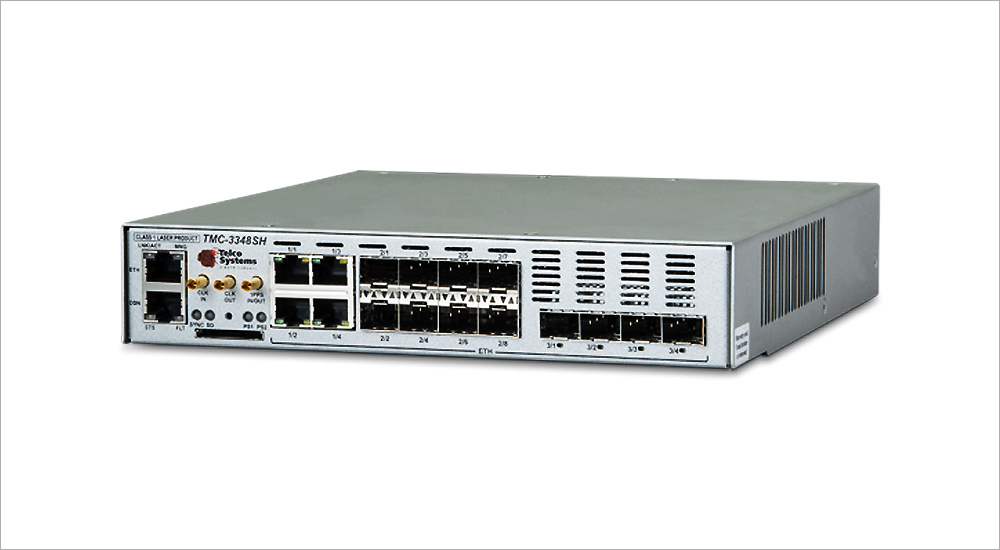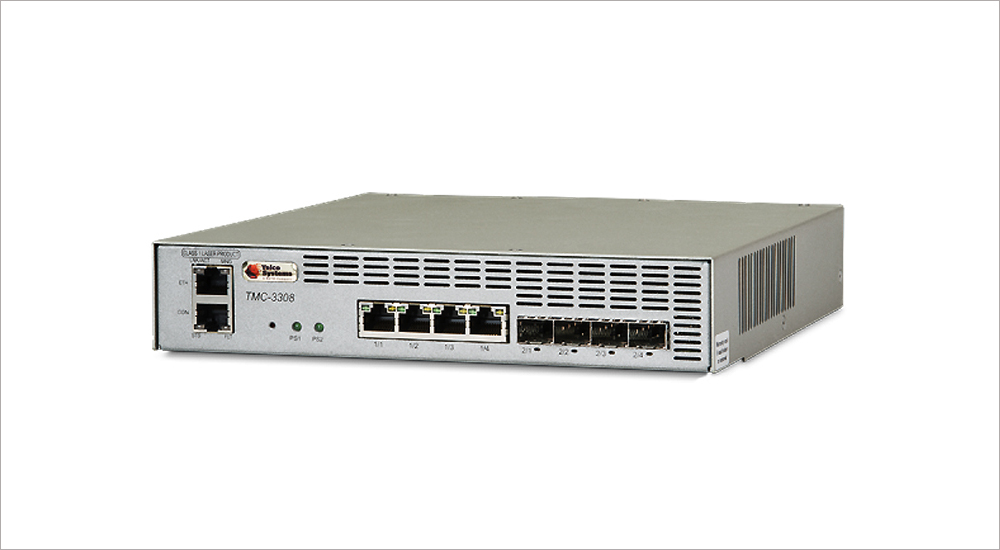Internet Solutions Kenya begins migration to SDN environment
Internet Solutions Kenya has started the upgrade of its networking infrastructure towards 10 Gigabit Ethernet. The upgrade project is supported by Telco Systems and is expected to take 12 to 24 months. Telco Systems will provide Internet Solutions Kenya with a fully automated software-defined network with the capacity to support 10 Gigabit Ethernet. The networking upgrade is being built on EdgeGenie Orchestrator service management system, T-Metro 7124, T-Marc 3348 and T-Marc 3308 demarcation devices from Telco Systems.
10 Gigabit Ethernet is a group of computer networking technologies for transmitting Ethernet frames at a rate of 10 Gigabits per second. Unlike previous Ethernet standards, 10 Gigabit Ethernet defines only full duplex point-to-point links which are generally connected by network switches.
According to Richard Hechle, Managing Director of Internet Solutions Kenya, the reason for upgrading the network was to ensure the solution provider was well placed to offer the right solutions to its clients, now and in the future. The network upgrade will provide Internet Solutions Kenya with full MPLS services across all parts of its fibre network, all the way to the customer.
“By upgrading our network capacity to 10GE, Internet Solutions Kenya will improve of the quality of its services, support more data traffic and meet the growing bandwidth requirements of our customers. The network upgrade is a major project planned over the next 12 to 24 months. We are also working to enhance our network monitoring solutions, looking at network optimisation, additional redundancies, and increased automation,” Hechle explains.
The network upgrade will introduce the latest MEF 2.0 standards of certification raising the quality of services. Telco Systems has been playing an active role in the MEF committees for a long time to help standardise Carrier Ethernet, contribute to various technical specifications and lead the market by introducing standards conforming products prior to most other vendors.
Telco Systems is among the first group of vendors who were certified with the Carrier Ethernet 2.0 for service providers and equipment vendors by the MEF. Once the software defined network platform has been stabilised, the network will be fully orchestrated, providing the benefits of rapid service provisioning, simplified network deployment and maintenance activities.
Across the country, Internet Solutions Kenya has close to 800 km of fibre connecting Nairobi, Mombasa, Diani, Kisumu, Thika and Eldoret, including over 1,000 buildings. This is also augmented by wireless network coverage across 42 towns. Across Africa, Internet Solutions has 63 points of presence in 14 African countries.
It has leased 15,500 sqm of datacentres capacity in London, South Africa, Kenya, and Nigeria. It maintains the largest African VSAT based MPLS network using 3,500 VSATs terminators and teleports in South Africa, Mozambique, Nigeria and Germany. With investments in Sat 3, Main One, WACS, Seacom, EASSy, TEAMs and SAFE, Internet Solutions has access to 210+ Gbps of bandwidth from various East and West African cable systems.
Internet Solutions Kenya is also continuing with its roll out of fibre across Kenya, and specifically it has a new metro network in Eldoret. It is also scaling the number of users in its regional wireless network in Uganda. Its key customers include telecom service providers, global carriers and multinational partners. Other customers are from banking and finance, mining, and information technology.
Internet Solutions Kenya is the Kenyan operations of Internet Solutions, a Pan-African telecoms service provider. The company provides advanced Cloud, communication, connectivity and carrier services to public and private sector organisations in Kenya and across East Africa.
Components of the roll out
10 Gigabit Ethernet is a group of computer networking technologies for transmitting Ethernet frames at a rate of 10 gigabits per second or 10 billion bits per second. It was first defined by the IEEE 802.3ae-2002 standard. Unlike previous Ethernet standards, 10 Gigabit Ethernet defines only full duplex point-to-point links which are generally connected by network switches. Shared-medium CSMA, CD operation has not been carried over from the previous generations Ethernet standards. Half duplex operation and repeater hubs do not exist in 10 Gigabit Ethernet. Like previous versions of Ethernet, 10GbE can use either copper or fiber cabling.
However, because of its bandwidth requirements, higher-grade copper cables are required: category 6a or Class F, Category 7 cables for lengths up to 100 meters. The 10 Gigabit Ethernet standard encompasses a number of different physical layer standards. A networking device, such as a switch or a network interface controller may have different PHY types through pluggable PHY modules, such as those based on SFP+. At the time that the 10 Gigabit Ethernet standard was developed, interest in 10GbE as a wide area network transport led to the introduction of a WAN PHY for 10GbE. The WAN PHY encapsulates Ethernet packets in SONET OC-192c frames and operates at a slightly slower data-rate 9.95328 Gbps than the local area network PHY.
Carrier Ethernet 2.0 certification
Carrier Ethernet equipment vendors would like to ensure their products meet customer requirements and conform to the Carrier Ethernet specifications. One of the ways to ensure this, is by getting certification for the product and services by Metro Ethernet Forum or MEF. The Carrier Ethernet 2.0 or CE 2.0 programme is the MEF framework, through which service providers and equipment vendors can demonstrate compliance with globally recognised MEF Carrier Ethernet service specifications. CE 2.0 standards accelerate the deployment of Carrier Ethernet services by reducing the time and resources required to assess service offerings and equipment.
Each type of service requires different combinations of service and performance attributes defined in MEF technical specifications, and include User Network Interface UNI, External Network-to-Network Interface E-NNI, Ethernet Virtual Connection EVC, and Operator Virtual Connection OVC. The test plan is composed of 293 test cases for Service Attributes and 387 test cases for Traffic Management. The major features include multiple classes of service, standardised performance tiers and metrics, end-to-end service fault management, standardised granularities for traffic management up to 10G, and standardised wholesale interconnect service.

Telco Systems, EdgeGenie service management system
EdgeGenie service management system offers a solution for full life-cycle of network deployment from planning to managing, monitoring and maintaining of Ethernet services. Assuring services end to-end requires knowing how services are being delivered across the network. Understanding how network resources are being utilised and identifying and correcting problems quickly is key to reducing customer churn.
EdgeGenie optimises network resources by utilising sophisticated path computation algorithms to ensure ongoing optimisation. An advanced planning tool allows the operator to model what-if scenarios to predict how network changes will affect service delivery. With EdgeGenie providers can not only visualise how services are being transported across the network but how changes to the network will affect the existing operational network. EdgeGenie lowers operational costs by reducing the complexity of service management in the Ethernet edge network. While it is designed specifically for Telco Systems devices, it can also co-exist with other vendor MPLS cloud to ensure that services are being delivered end-to-end.
The network and service management application includes tools to provision services over Ethernet and MPLS networks using advanced path-computation algorithms, pre-defined SLA profiles and available network resources. The provisioning engine provides smart computation profiles to allow the operator to wisely distribute traffic across his network. The system allows definition of multiple types of SLA profiles. Profiles may also include advanced hierarchical quality of service where the limits can also be set for the real-time applications like voice and video and how the remaining bandwidth can be allocated between the business critical and best effort applications. In addition, the provisioning engine can configure fail-over mechanisms and compute redundant paths throughout the network to protect services.
Using the service analyser, the user gets a graphical representation of the service topology and gains access to service attributes data, visualised on the service topology map. This capability allows the operator to correlate between service infrastructure and service attributes at a glance. In addition, EdgeGenie includes the ability to manage and customise network domains and physical topologies, manage inventory, and proactively monitor faults and alarms.
A root cause analysis tool allows the operator to understand, which network faults affect services and to initiate corrective action. The root cause analysis tool provides a unique graphical representation of the relations between network faults and affected services that allows the operator to easily understand which are the affected services and which faults should be dealt with first in order to amend the service outages.
The SLA manager defines, measures and analyses customer SLAs. Threshold crossing alarms provide indication before SLA breach. Resources can be added, configured and restored through the system to facilitate smooth network expansion, and multiple reroute during maintenance ensures that there is no customer downtime. The Device Manager is a tool providing a real-time craft interface to manage all supported devices. The Customer Network Management portal allows the operator to provide service-related information to its customers. This portal can be used by the operator as a sales tool to provide to its customers the justification to move away from best effort services into services with SLA or increase their service bandwidth. The portal can also be used by the operator to provide proof to its customers that service SLA’s are being met.
EdgeGenie supports demarcation and aggregation switches which are purpose-built for the carrier’s Ethernet edge. They embody a wide range of features including standards based OAM, a choice of resiliency protocols including G.8031 and G.8032, support for multiple transport mechanisms like QinQ, VPLS, or HVPLS using L2VPNs, and offer advanced provisioning capabilities for pre-configuration and auto-configuration, and remote troubleshooting and diagnosis features like RFC 2544-based embedded test heads and loopback options.

Telco Systems T-Metro 7124S, 10G Ethernet MPLS Demarcation and Pre-Aggregation Platform
The T-Metro 7124S pre-aggregation and demarcation device is a member of Telco Systems’ family of Carrier Ethernet switches. The T-Metro 7124S supports both Carrier Ethernet and MPLS transport technologies with operations, administration and maintenance tools and extensive quality of service and resiliency capabilities. As the demand for data bandwidth increases, providers can use the statistical multiplexing nature of packetised traffic to provide more services on the same infrastructure. At the same time, service providers want to differentiate their services and provide a proper quality of service for different applications requirements.
A wide set of service features allow service providers to have higher granularity and hierarchal levels to control the behavior of traffic and services in the network and to provide this differentiation. Engineered to the latest standards for Carrier Ethernet, the T-Metro 7124S, together with Telco Systems’ EdgeGenie Service Management System and demarcation devices, creates a complete network edge solution that supports the most stringent SLAs, ensuring the service providers can offer a high quality of service which will increase their revenue, while reducing their OPEX. T-Metro 7124S was designed to provide a carrier grade level of resiliency, both in physical design and by implementing a wide variety of resiliency protocols.

Telco Systems T-Marc 3348, 10 Gigabit Ethernet, MPLS Demarcation Device
The T-Marc 3348 demarcation device offers an all-in-one solution that meets the increasing challenges of mobile operators, mobile backhaul wholesalers, and service providers to cost effectively connect base stations and controller sites running LTE and LTE Advanced. The T-Marc 3348 also offers enterprises 10GE connectivity for heavy duty cloud applications. The device supports IEEE 802.1q, Q-in-Q, and MPLS transport technologies with no licensing fees, increasing network flexibility and future-proofing the network while reducing technological risks. The T-Marc 3348 provides access to advanced data services such as virtual private wire services, virtual private LAN services, and hierarchical virtual private LAN services, simplifying the network and making it easier to manage, while gaining the added value that MPLS provides.
As the demand for bandwidth increases, but revenue streams stay flat, service providers want to differentiate their services and provide a proper quality of experience for various application requirements. A wide set of service features enable service providers to have granular control over the behavior of traffic and services in their networks, including WRED, multi-level queues, rate limiters and shapers. The T-Marc 3348 supports multiple traffic engineering and dynamic signaling technologies, so that providers are able to engineer data paths based on multiple attributes, while assuring that the requested paths can meet defined SLA requirements. T-Marc 3348 provides comprehensive solutions and services that best support IP environment requirements – including Virtual Routing and Forwarding support, IP static routing and dynamic routing protocols.

T-Marc 3308, Carrier Ethernet 2.0, MPLS, IP, SDN Enabled Premium NID
T-Marc 3308 is the first quad-tech demarcation device on the market, offering Carrier Ethernet 2.0, MPLS, IP Layer 3, and SDN. Combining all of these capabilities into one device delivers the most cost-effective solution and provides operators with the flexibility to face any service scenario now and in the future. T-Marc 3308 device comes with Layer 3 support and is ready for future SDN-enabled networks. T-Marc 3308 is suitable for wholesale and business service providers to connect their customers efficiently between sites and into the cloud. T-Marc 3308 enables service providers to choose whether to use Carrier Ethernet network capabilities or to use MPLS to the edge without any additional software costs. In addition, T-Marc 3308 allows service providers to combine Layer 3 native services together with Layer 2 advanced OAM tools. By supporting SDN, T-Marc 3308 allows service providers to smoothly transition to future SDN-enabled networks.
T-Marc 3308 supports IEEE 802.1q, Q-in-Q and MPLS transport technologies, providing high flexibility in network design and thus future proofing the network. The device allows access to advanced data services such as virtual private wire services, virtual private LAN service and hierarchical VPLS, simplifying the network and making it easier to manage, while gaining the added value of MPLS.
To allow communications service providers to cope more efficiently with the increased demand for a more diverse range of services, T-Marc 3308 embeds sophisticated and flexible quality of service capabilities such as hierarchical queuing, rate limiting and traffic shaping, advanced scheduling schemes, and intuitive service-oriented SLA configurations. This allows providers to benefit from the multiplexed nature of Carrier Ethernet while assuring SLA requirements during traffic congestion.
As an MPLS demarcation device, T-Marc 3308 supports various traffic engineering technologies like LDP and RSVP-TE. These technologies allow service providers to engineer data paths based on several attributes while offering the highest level of protection and assuring that requested paths can meet defined SLA requirements. They also ensure fast switchover time to minimise degradation or interruption of services in case of failure, and provide high availability and sub-50ms resilience. T-Marc 3308 supports a broad set of hardware-based OAM tools to help providers reduce their operating expenses and to assure their customers that they are meeting their agreed SLAs.






